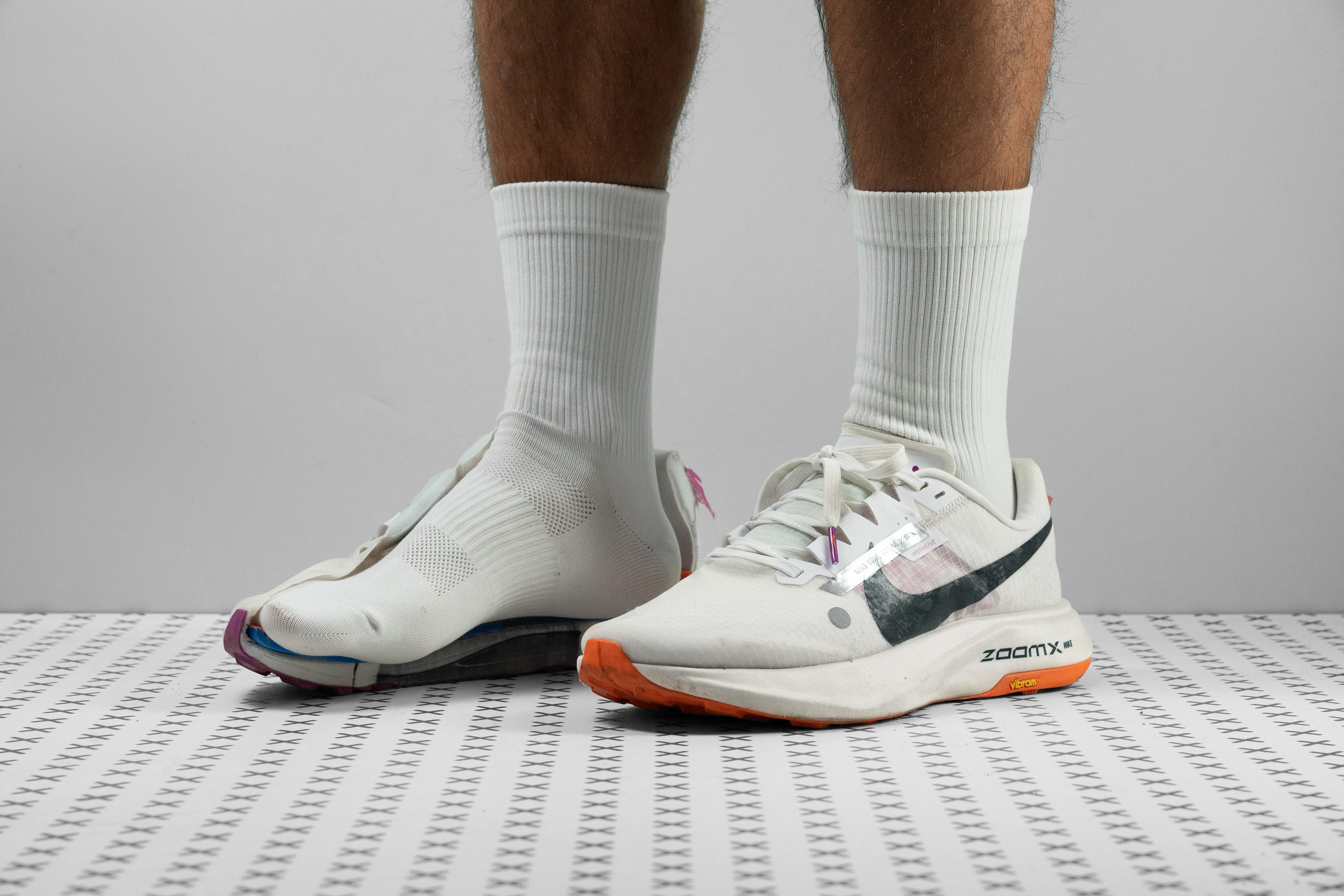Our verdict
- Top pick in best trail running shoes
- Top pick in best running shoes with a carbon plate
Pros
- Optimized for trail races
- Accommodates wide feet with ease
- Full-length, responsive Pebax midsole
- Equipped with a Vibram Megagrip outsole
- Ideal for heel strikers
- Offers outstanding comfort
- Remarkably stable
- Suitable for 100-mile races
Cons
- The Vaporweave upper could be more durable and breathable
- Heavier than expected even for a trail racing shoe
- The $260 price tag might be steep for some
- Limited toebox height
Audience verdict
- Top 22% in trail running shoes
- Top 20% in Nike running shoes
Comparison
The most similar running shoes compared
+ + Add a shoe | |||||
|---|---|---|---|---|---|
| Audience score | 89 Great! | 86 Good! | 90 Superb! | 87 Great! | |
| Price | $260 | $225 | $200 | $200 | |
| Trail terrain | LightModerate | LightModerate | LightModerate | Moderate | |
| Shock absorption | High | High | - | Moderate | |
| Energy return | High | Moderate | - | High | |
| Traction | - | High | - | - | |
| Arch support | Neutral | Neutral | Neutral | Neutral | |
| Weight lab Weight brand | 10.5 oz / 299g 10.1 oz / 286g | 11.8 oz / 335g 12.1 oz / 343g | 8.7 oz / 248g 8.8 oz / 249g | 9.5 oz / 269g 9.1 oz / 258g | |
| Lightweight | ✗ | ✗ | ✓ | ✗ | |
| Drop lab Drop brand | 11.8 mm 8.5 mm | 10.6 mm 8.0 mm | 13.0 mm 10.0 mm | 7.1 mm 6.0 mm | |
| Strike pattern | Heel | Heel | Heel | Mid/forefoot | |
| Size | True to size | - | Half size small | True to size | |
| Midsole softness | Soft | Balanced | Soft | Soft | |
| Difference in midsole softness in cold | Small | Small | Normal | Small | |
| Plate | Carbon plate | Carbon plate | Carbon plate | Carbon plate | |
| Toebox durability | Very bad | Bad | Decent | - | |
| Heel padding durability | Good | Good | Decent | - | |
| Outsole durability | Good | Good | Good | - | |
| Breathability | Moderate | Moderate | Moderate | Moderate | |
| Width / fit | Medium | Wide | Medium | Narrow | |
| Toebox width | Wide | Medium | Medium | - | |
| Stiffness | Stiff | Stiff | Stiff | Stiff | |
| Torsional rigidity | Stiff | Stiff | Stiff | Stiff | |
| Heel counter stiffness | Moderate | Stiff | Moderate | Moderate | |
| Lug depth | 3.0 mm | 3.0 mm | 2.9 mm | 3.4 mm | |
| Heel stack lab Heel stack brand | 36.6 mm 38.0 mm | 47.3 mm 49.0 mm | 34.7 mm 36.5 mm | 33.4 mm 36.0 mm | |
| Forefoot lab Forefoot brand | 24.8 mm 29.5 mm | 36.7 mm 41.0 mm | 21.7 mm 26.5 mm | 26.3 mm 30.0 mm | |
| Widths available | Normal | Normal | Normal | Normal | |
| For heavy runners | ✗ | ✓ | ✗ | ✗ | |
| Season | All seasons | All seasons | All seasons | All seasons | |
| Removable insole | ✓ | ✓ | ✓ | ✓ | |
| Orthotic friendly | ✓ | ✓ | ✓ | ✓ | |
| Ranking | #87 Top 24% | #179 Top 48% | #68 Top 19% | #165 Top 44% | |
| Popularity | #221 Bottom 41% | #196 Bottom 47% | #314 Bottom 16% | #244 Bottom 35% |
Who should buy
Based on our lab tests, the eagerly anticipated Nike Ultrafly is a top pick for:
- Nike aficionados seeking the plush, incredibly-propulsive ZoomX experience on the trails.
- Ultra-marathoners looking for the ultimate racing shoe.
- Trail runners with a flexible budget who desire a high-performance shoe providing both comfort and speed.
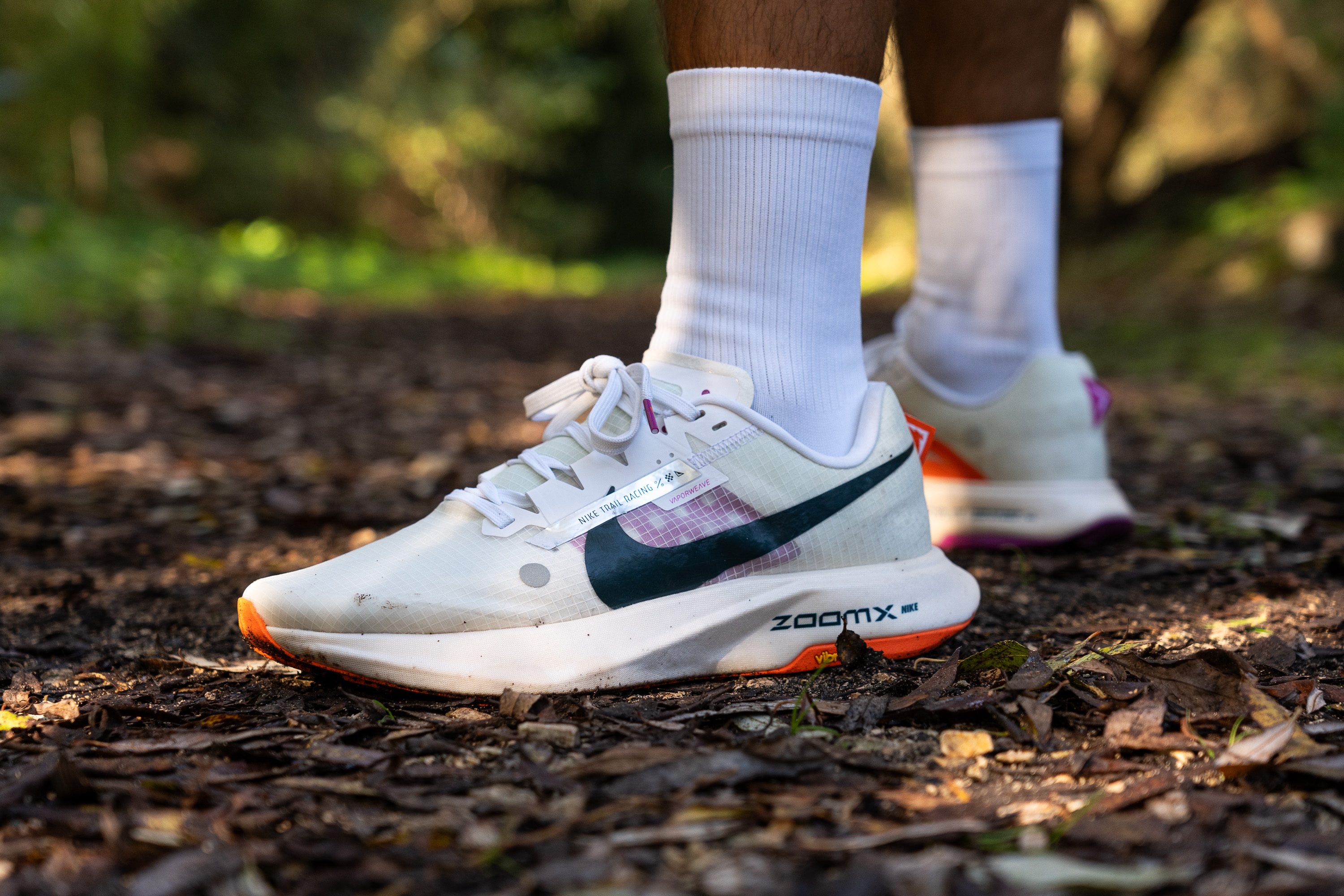
Who should NOT buy
If you're after an ultra-light trail racing shoe, the Nike Ultrafly might not be the one. Tipping the scales at over 10 ounces in our lab, it doesn’t exactly feel lightweight. For something much lighter, consider the Hoka Zinal 2, or for a more balanced approach between cushioning and weight, the Saucony Endorphin Edge.
Additionally, the Ultrafly comes with a hefty price tag. If you're looking to save some money and don't mind a slightly less responsive midsole, we suggest excellent well-rounded alternatives like the Brooks Cascadia 17 or the Saucony Peregrine 13 available in the market.

Cushioning
Shock absorption
Nike designed the Ultrafly with plenty of shock absorption in the heel at 134 SA, but the thinner forefoot comes in at just 91 SA—making it less appealing for runners who don’t strike with the rear.
It caught us off guard, especially since this shoe targets ultra-distance events, yet the slim forefoot might not meet the needs of midfoot or forefoot strikers.
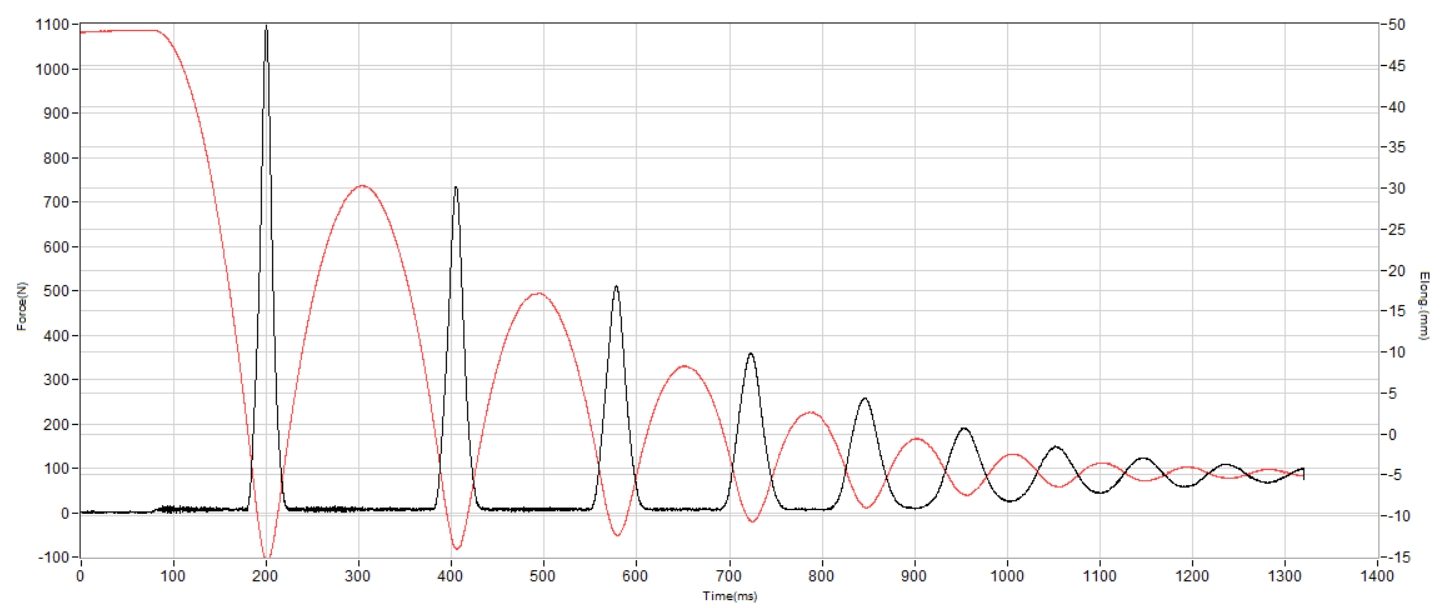
| Ultrafly | 134 SA |
| Average | 122 SA |
Energy return
Energy return ranks among the best in trail running with 66.2% in the heel and 68.5% in the forefoot. It’s about 10% lower than top-tier road super shoes, but that’s expected due to the rugged outsole adding non-bouncy Vibram rubber underfoot.
| Ultrafly | 66.2% |
| Average | 55.6% |
Heel stack
If you're in search of a cushioned trail running shoe, your search ends here. With a thickness of 36.6 mm, it stands as one of the thickest models on the market, and performs phenomenally in this aspect. The miles just seem to effortlessly roll by in every long run.

| Ultrafly | 36.6 mm |
| Average | 32.6 mm |
Forefoot stack
In the forefoot, the stack height is 24.8 mm, which is the average for trail shoes.
Although some runners might desire extra cushioning in this area for an ultra-distance shoe, we believe the current amount is sufficient in the Ultrafly. Adding more foam would have increased the weight of an already heavy shoe unnecessarily.
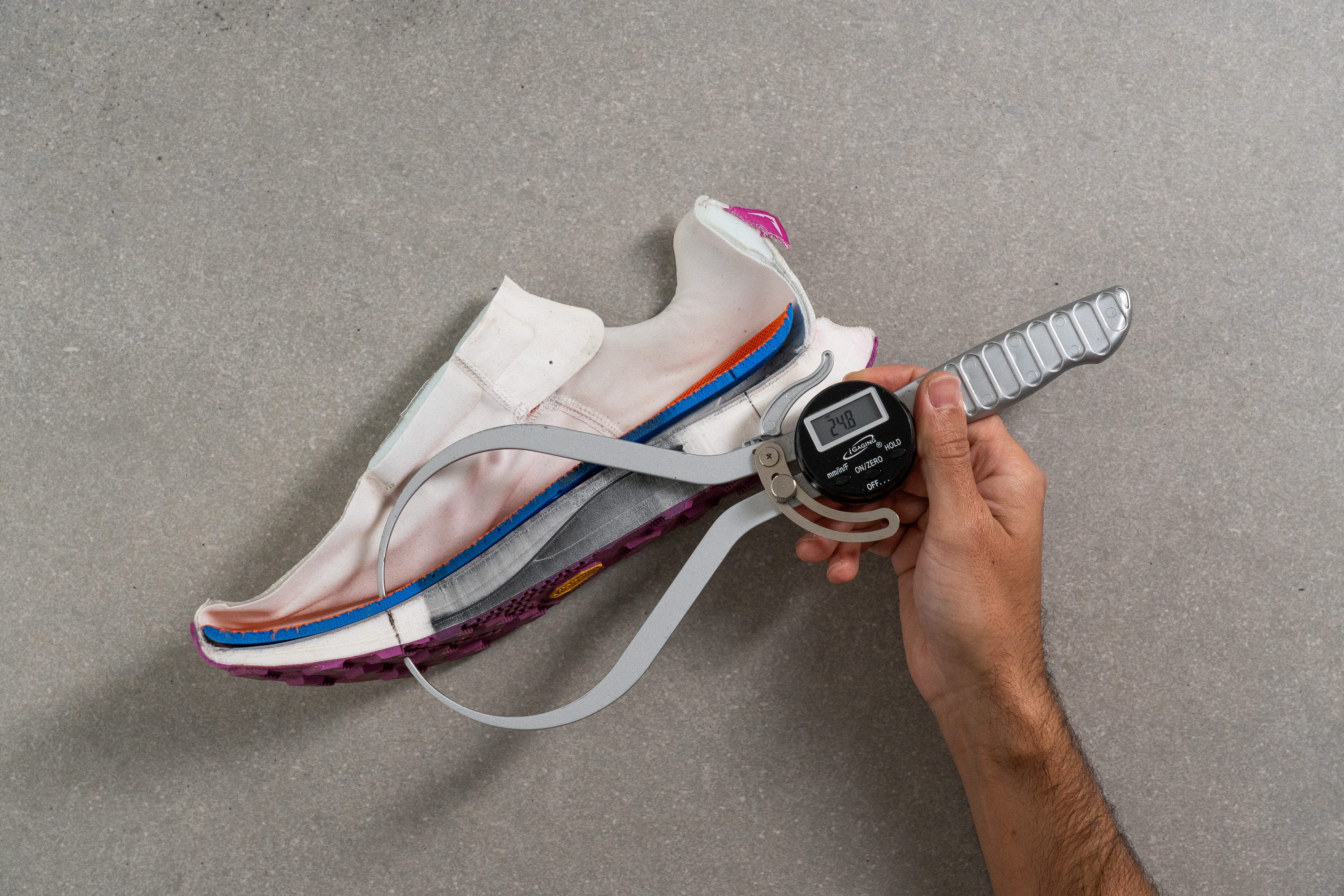
| Ultrafly | 24.8 mm |
| Average | 25.1 mm |
Drop
Nike claims an 8.5-mm drop, but our measurement shows 11.8 mm. Wondering why such a discrepancy occurs? We've got an advanced, in-depth explanation to clear things up.
While it may seem higher than usual in trail shoes, it feels slightly less steep underfoot because of its geometry, and it's a marvel for heel strikers.
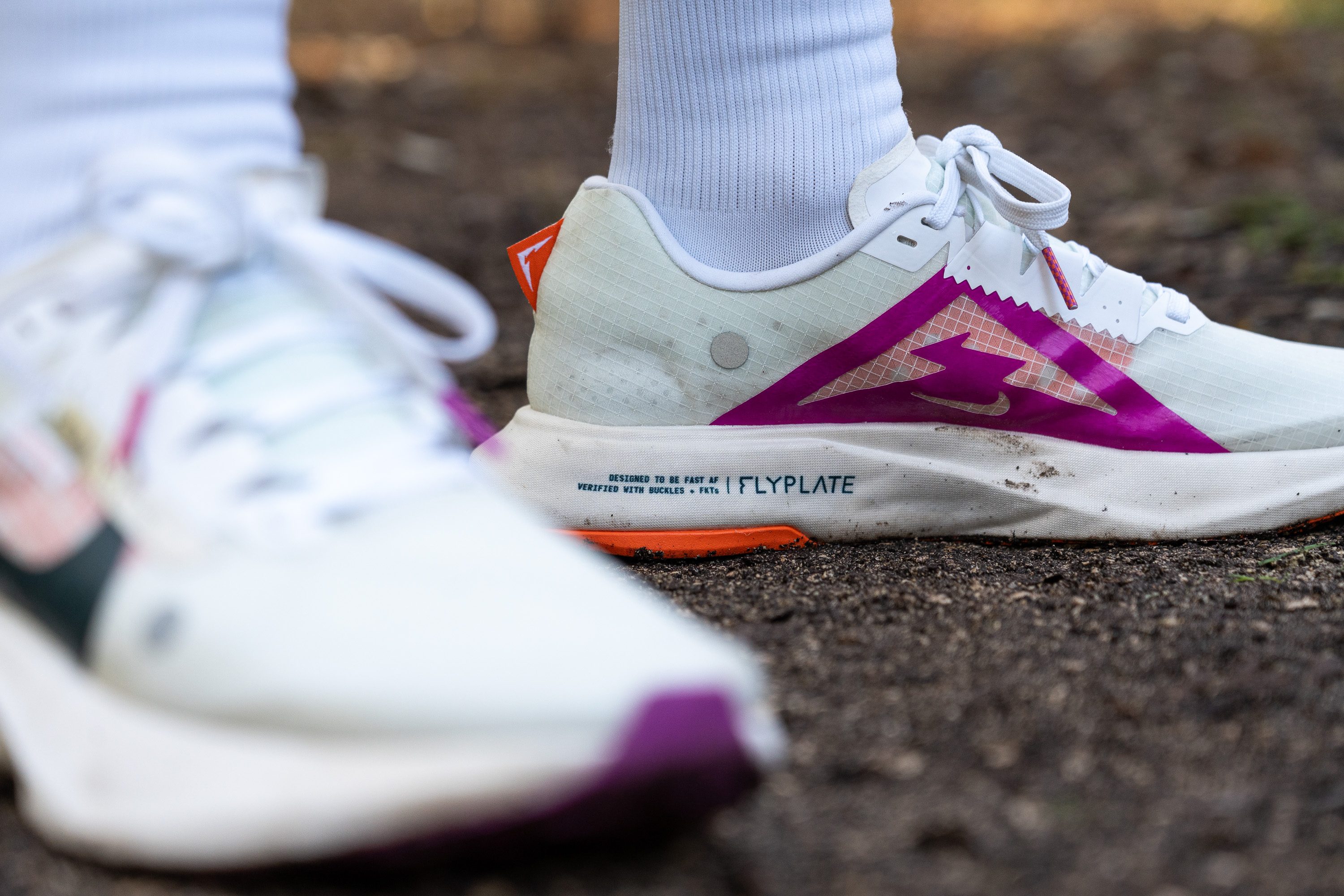
| Ultrafly | 11.8 mm |
| Average | 7.5 mm |
Midsole softness
Accustomed to firm, brick-like trail midsoles, the Ultrafly provides a cloud-like experience like no other.
With a durometer of just 9.8 HA, its full-length, Pebax-based ZoomX midsole offers world-class energy return.
There is a caveat, though. The forked carbon plate embedded in the midfoot results in a slightly firmer feel than the durometer reading suggests. However, this also contributes added stability and snappiness to the shoe.
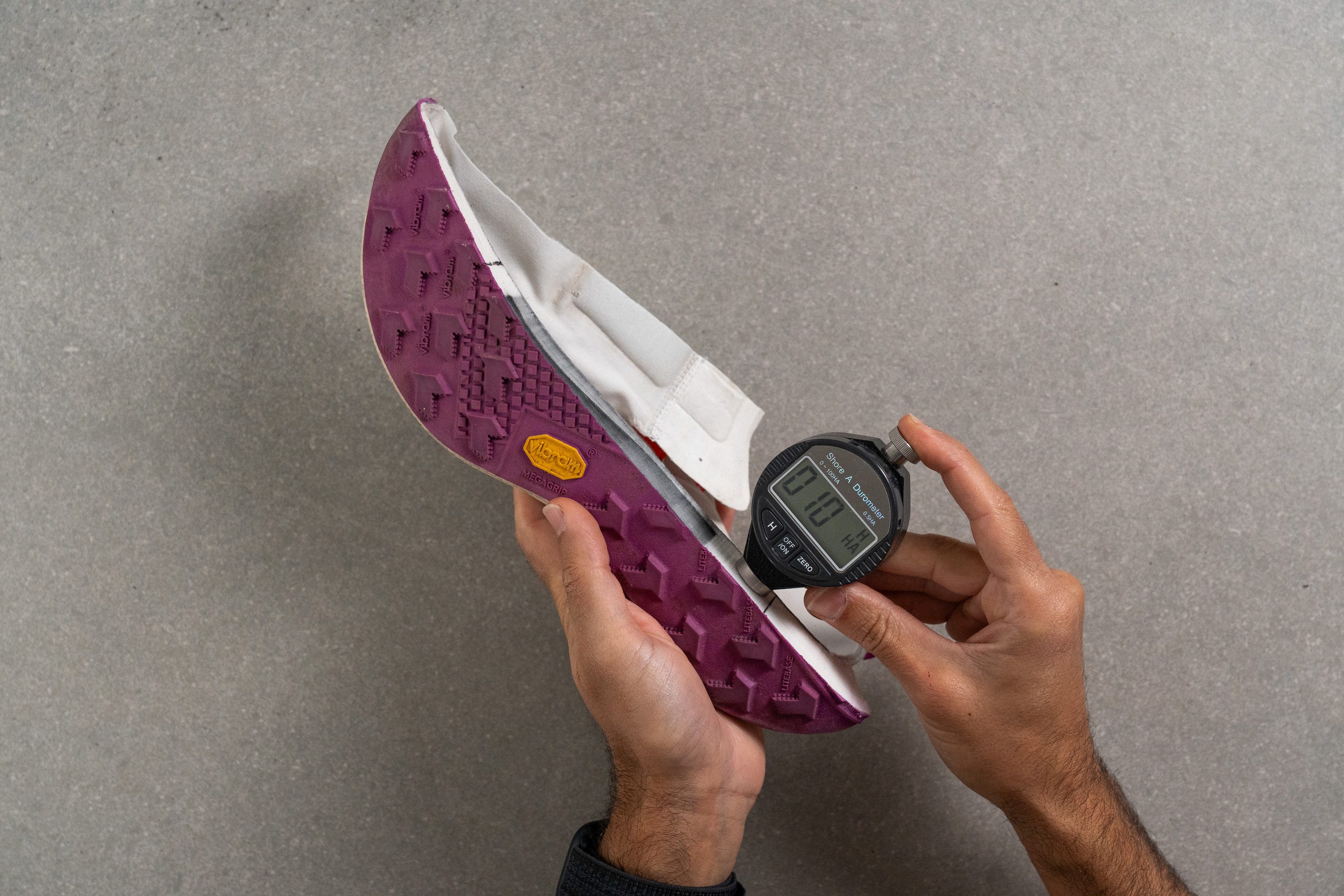
| Ultrafly | 9.8 HA |
| Average | 21.9 HA |
Size and fit
Size
Nike Ultrafly fits true to size (94 votes).
Internal length
| Ultrafly | 267.5 mm |
| Average | 269.0 mm |
Width / Fit
With the midsole’s impressive width, we expected a generously spacious overall fit—even for a Nike shoe. To quantify our expectations, we poured gel into the shoe and created a 1:1 replica of its shape.
The result revealed an average measurement of 95.8 mm in the widest part. This measurement matches the average width of trail shoes, although we felt like it was somewhat wider. Below, we find out why.
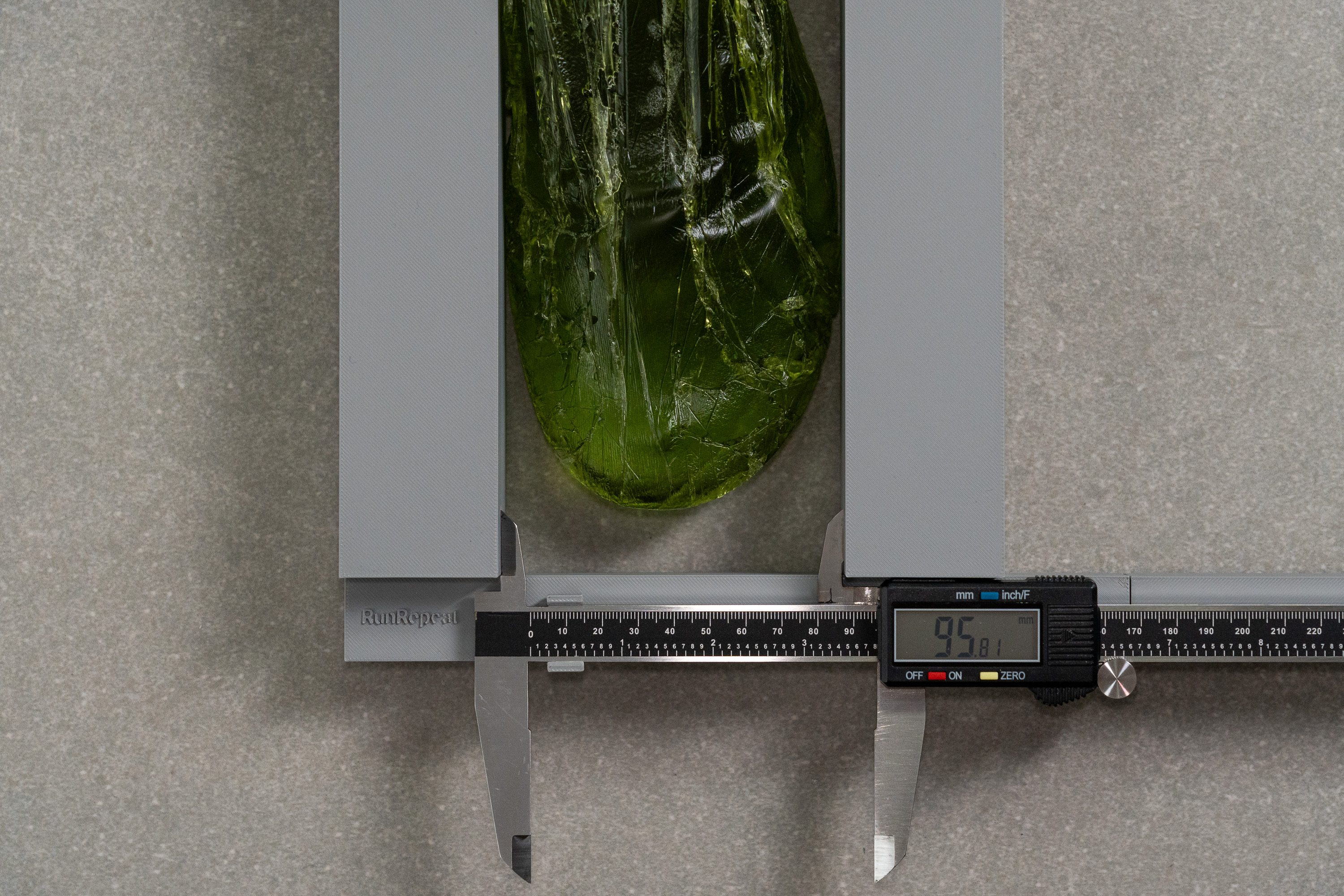
| Ultrafly | 95.8 mm |
| Average | 95.6 mm |
Toebox width
Our second measurement shed more light on our experience with the Ultrafly. The caliper stopped at 76.7 mm, proving this toebox is wider than most competitors and offering some room for feet to expand during long races. This is why this shoe felt spacious from the start.

| Ultrafly | 76.7 mm |
| Average | 74.6 mm |
Toebox height
On the other hand, we can confirm that if a locked-in feel is your priority during trail races, this design will deliver exactly what you need.
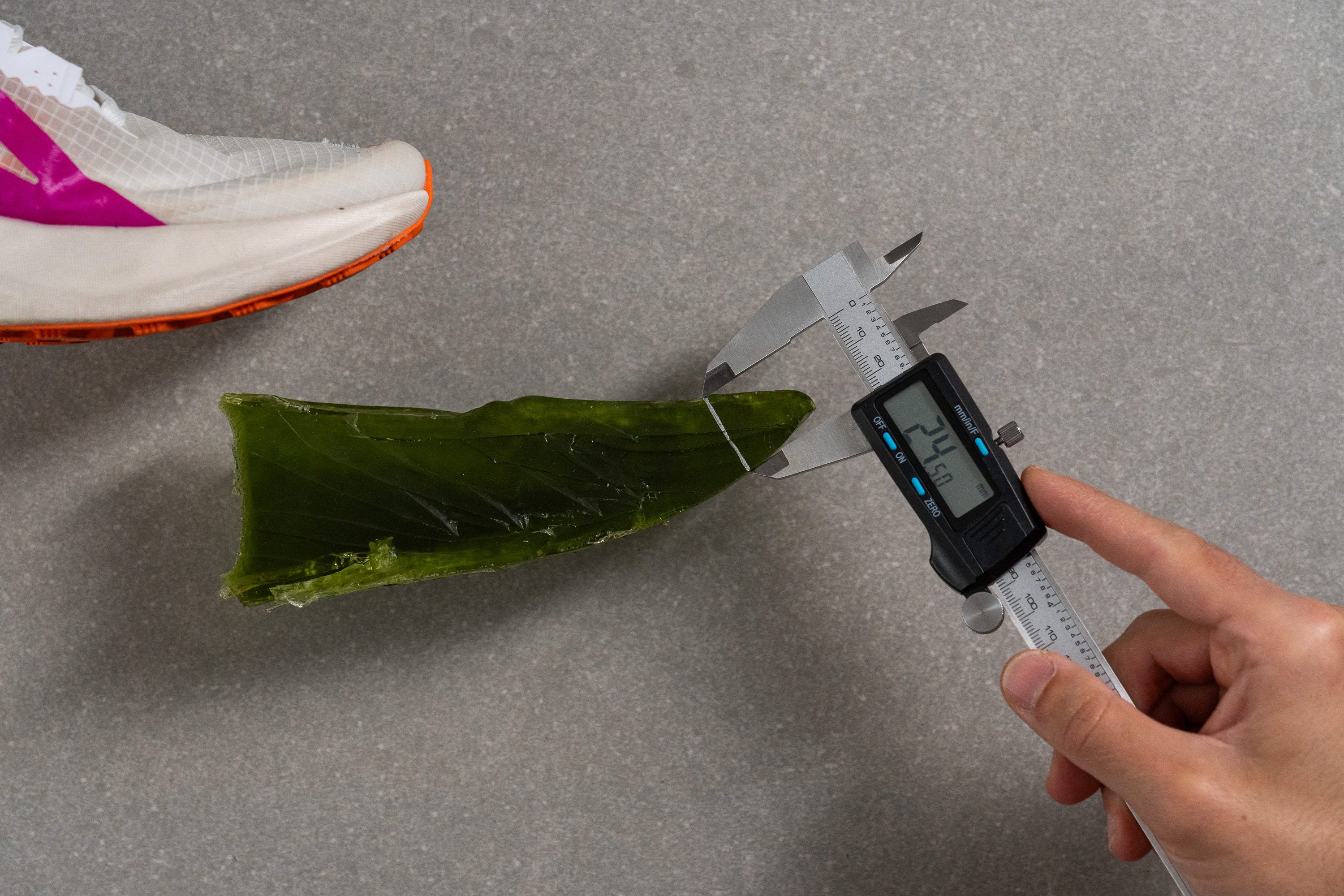
| Ultrafly | 24.5 mm |
| Average | 27.1 mm |
Traction / Grip
Lug depth
One crucial feature of any trail shoe is the lugs. The Ultrafly features short 3.0-mm lugs, designed for easy trails and fast running but not specifically for technical or muddy terrain.
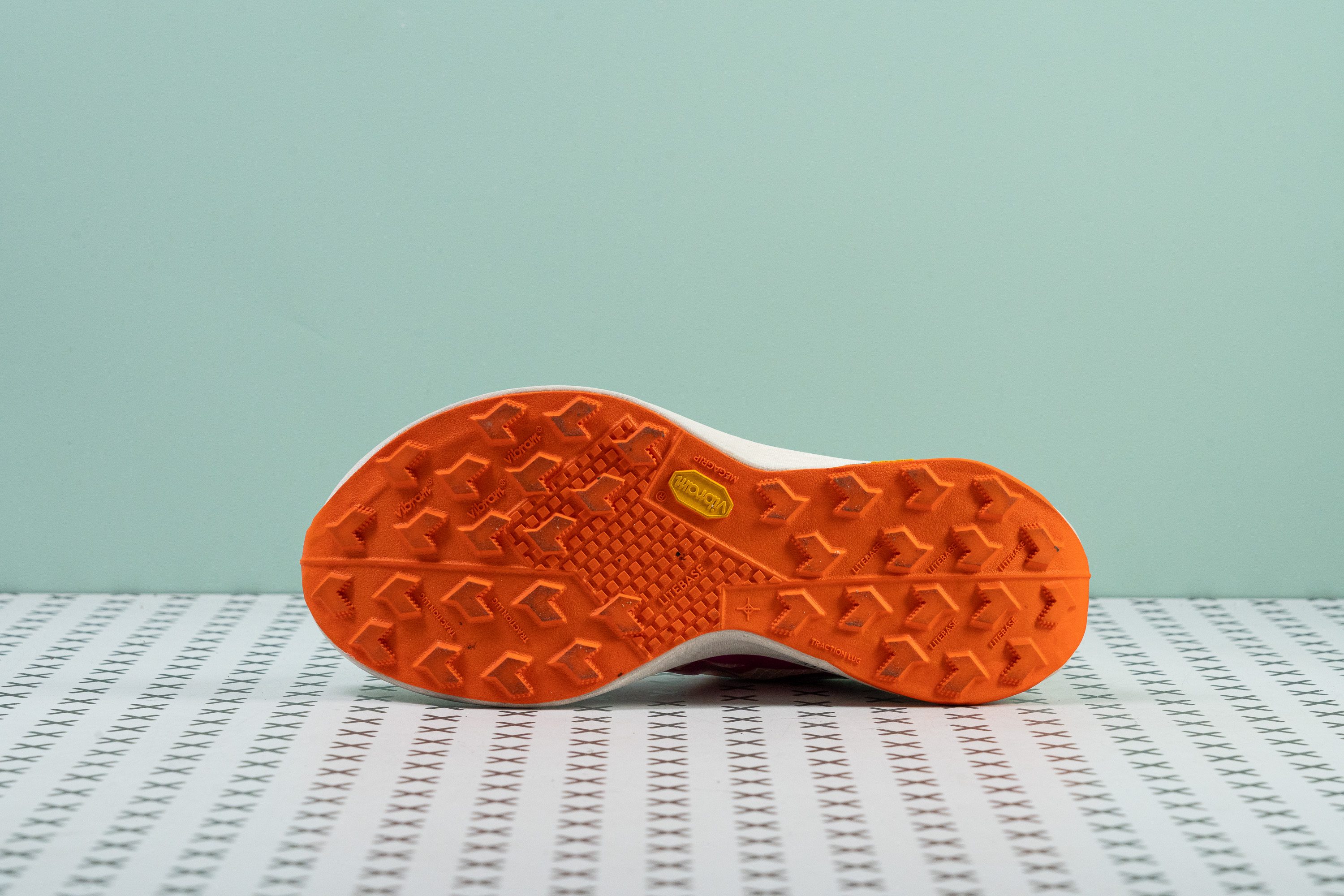
However, the lugs on this Vibram outsole are certainly capable of handling more challenging areas when necessary.

| Ultrafly | 3.0 mm |
| Average | 3.5 mm |
Outsole design
The Nike Ultrafly features a full-length Vibram Megagrip Litebase outsole in a bold orange finish. The design includes shallow multi-angled lugs with moderate spacing and directional shapes across the heel, midfoot, and forefoot. There's a subtle central groove in the heel, and the full-rubber construction works wonders for added surface protection.

Flexibility / Stiffness
This shoe underwent a seemingly endless development period. We spotted it being tested in the wild almost two years before its release, and we're aware that its forked plate underwent numerous changes during development.
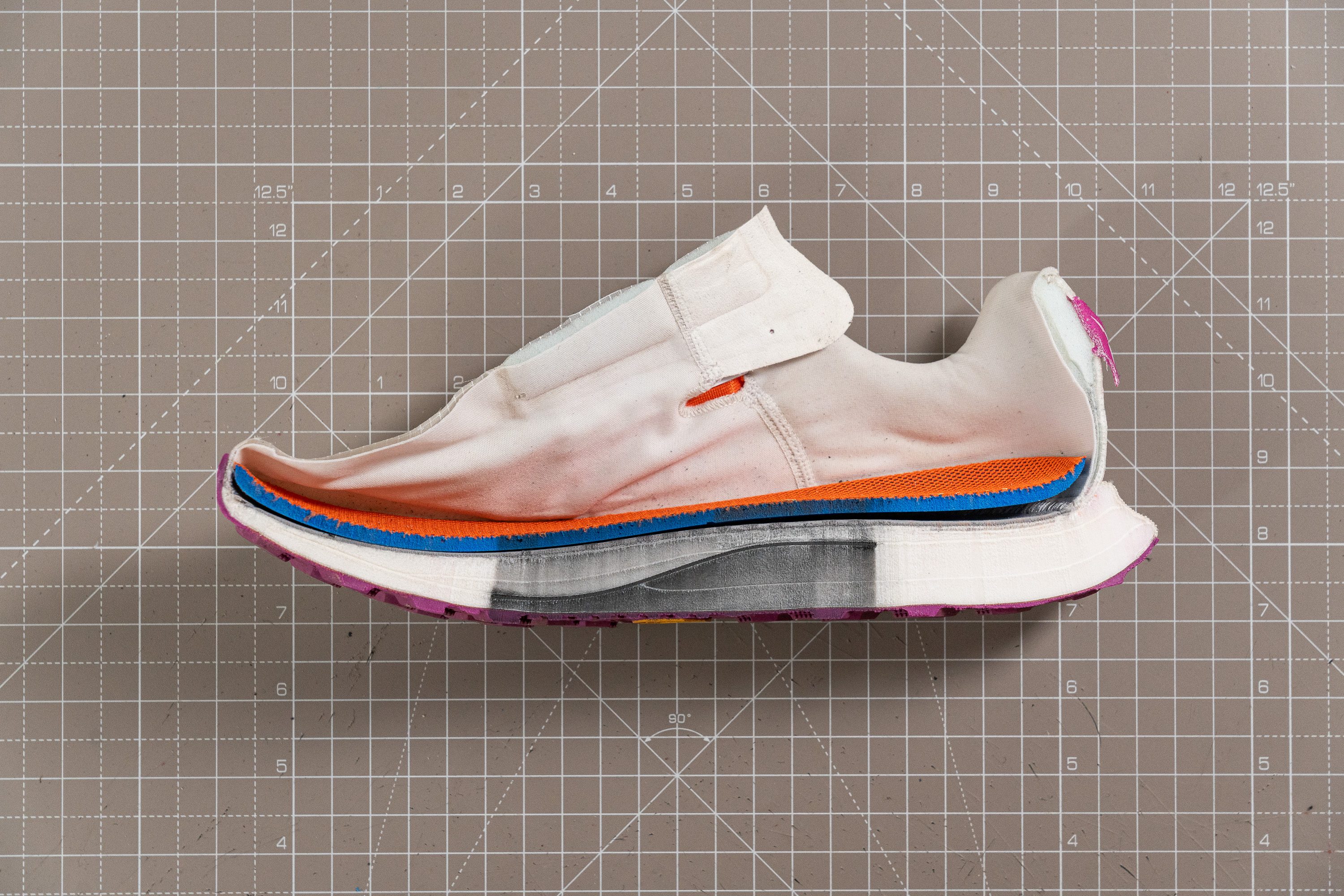
The Ultrafly follows that trend featuring a midfoot plate that adds exceptional stiffness to the shoe, surpassing even our expectations. However, it's not a full-length carbon plate, although it goes longer than it seems in the image because of its forked shape.
In our 30-degree bend test, it required a substantial 20.6N of force to bend the shoe.
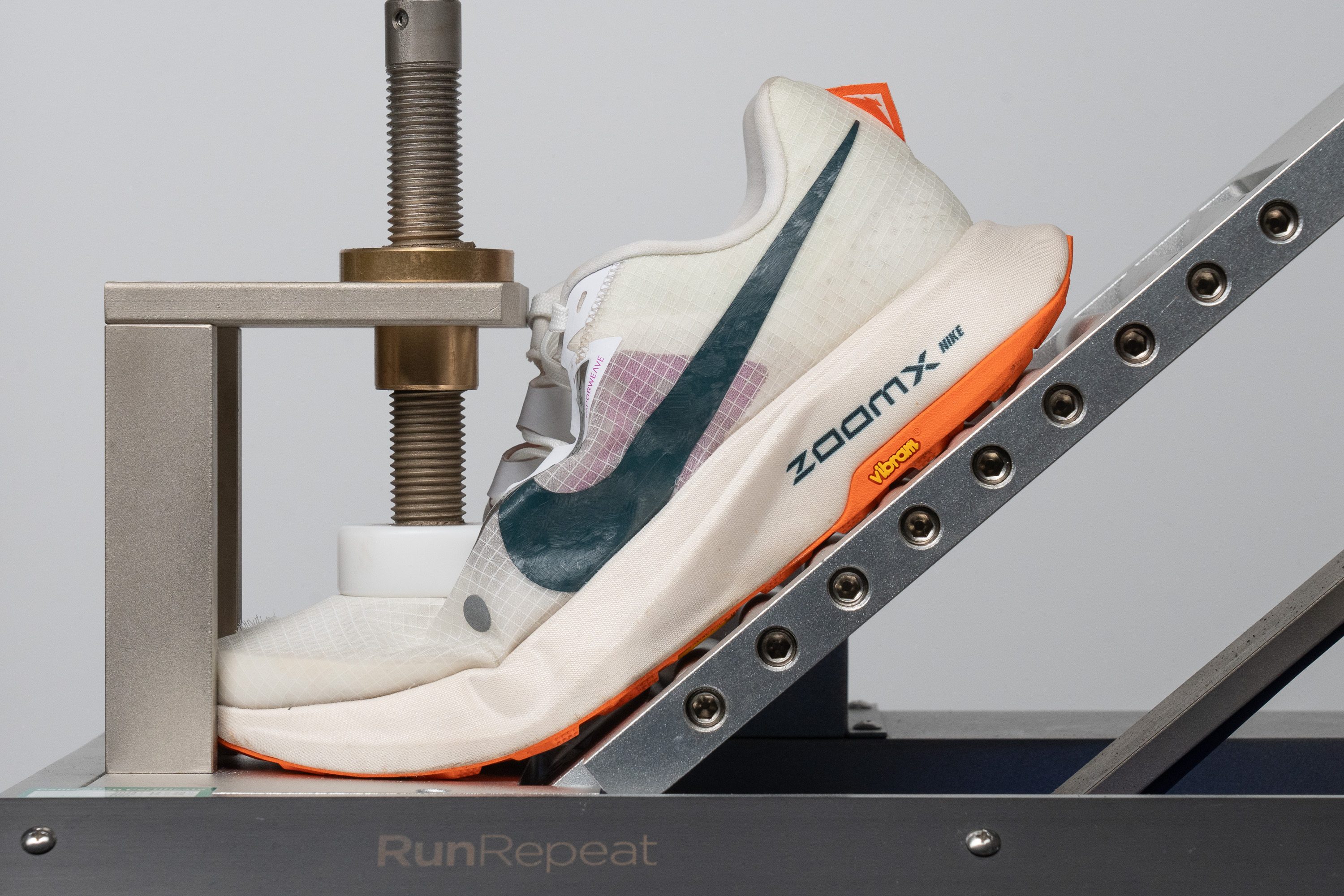
| Ultrafly | 20.6N |
| Average | 14.7N |
Stiffness in cold
We followed the same procedure as with the midsole softness test—a 20-minute pause followed by another measurement.
This time, the shoe registered a higher stiffness at 48.8N.
| Ultrafly | 48.8N |
| Average | 35.9N |
Stiffness in cold (%)
This represents a 20.5% increase in stiffness, a positive outcome that aligns with our expectations for a premium foam like ZoomX.
| Ultrafly | 21% |
| Average | 32% |
Weight
Despite Nike efforts, the most disappointing aspect of this shoe is definitely its weight.
Weighing in at 10.5 oz (299g), it's excessively heavy for a racing shoe, especially one with a Vaporweave upper. We're confident that Nike has the capability to significantly improve in this regard, so hopefully, we'll see a lighter version in version 2.
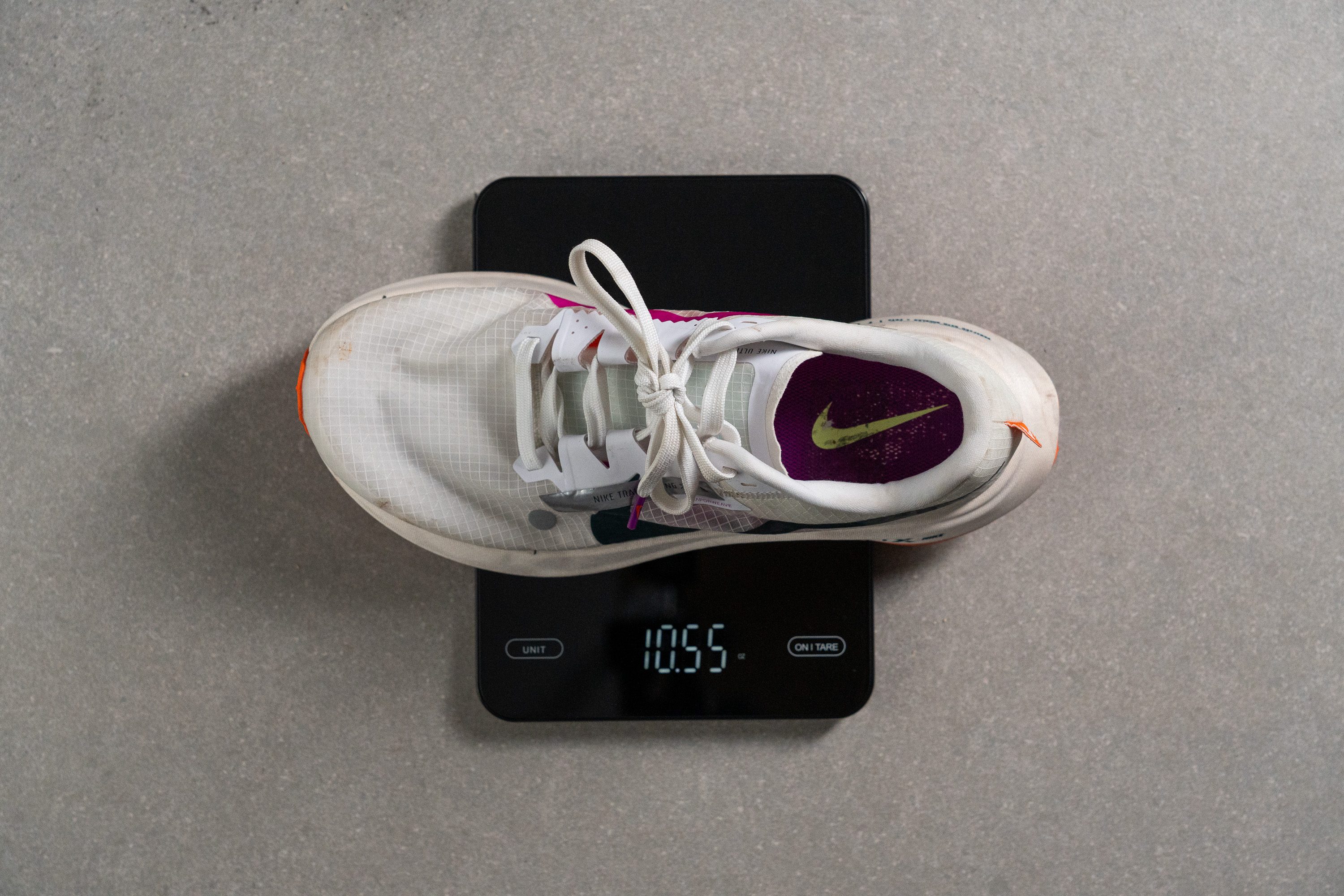
| Ultrafly | 10.5 oz (299g) |
| Average | 10.2 oz (289g) |
Breathability
The much-anticipated Ultrafly arrived with a big surprise, featuring Vaporweave—a technology that seemed to have been abandoned by Nike after its debut in the first-generation Vaporfly.
Vaporweave is an ultra-thin mesh that faced criticism for poor breathability. So, our expectations weren't high before testing, particularly because the Ultrafly combines this mesh with a comfort-focused fabric underneath as can be seen in the video above.
However, the Ultrafly earned a 3/5 in our smoke-pumping test, which is not a bad result for this type of plasticky upper.
Using a light, we confirmed that the Vaporweave upper doesn't have any big breathability holes, a common feature in trail running shoes.
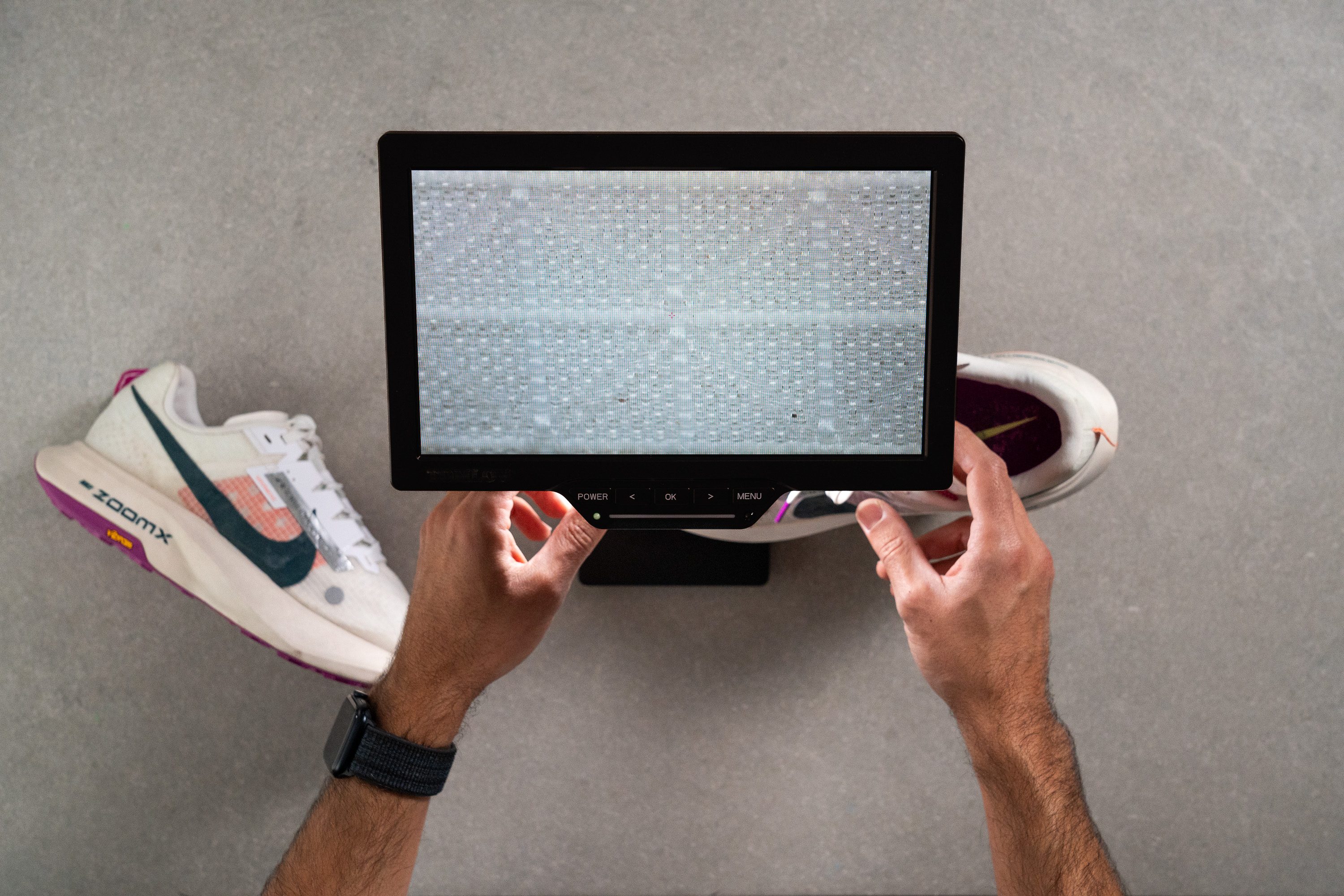
Under the microscope, we discovered some tiny holes responsible for the shoe's average breathability score. Without these holes, the shoe would have likely scored a 1/5.
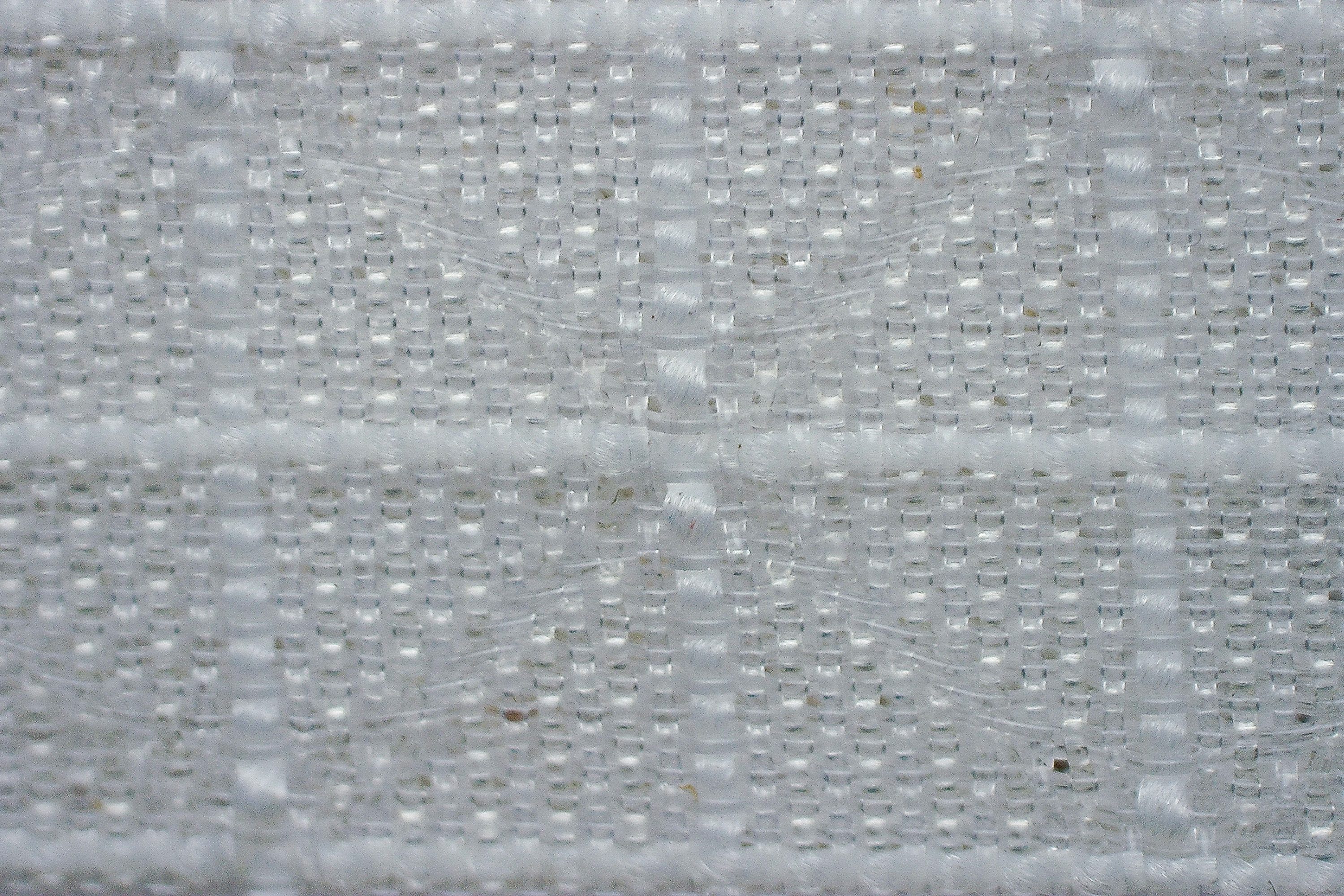
| Ultrafly | 3 |
| Average | 3.2 |
Stability
Lateral stability test
With its impressive height and plush feel, it seemed unlikely that this shoe would rank as one of the most stable in trail running.
However, we can confidently say it's far more stable than anyone might expect before trying it out. We will show you how Nike accomplished this feat.
Torsional rigidity
The primary method they've used is incorporating an ultra-stiff, forked carbon plate, which lead to a 5/5 in our manual assessment about torsional rigidity.
While this might compromise comfort somewhat, it proves to be a game-changer for stability, particularly in shoes like this, with an exceptionally soft midsole.
| Ultrafly | 5 |
| Average | 3.6 |
Heel counter stiffness
The heel counter features moderate stiffness at 3/5, adding to the overall increase in stability, and it's clear that Nike still has a few more tricks up its sleeve if needed.
| Ultrafly | 3 |
| Average | 3 |
Midsole width - forefoot
The key factor behind the shoe's considerable weight and exceptional stability is its impressively wide midsole.
Measuring 122.1 mm in the forefoot, Nike's designers recognized the need for dimensions beyond what a Vaporfly offers to suit trail conditions effectively.
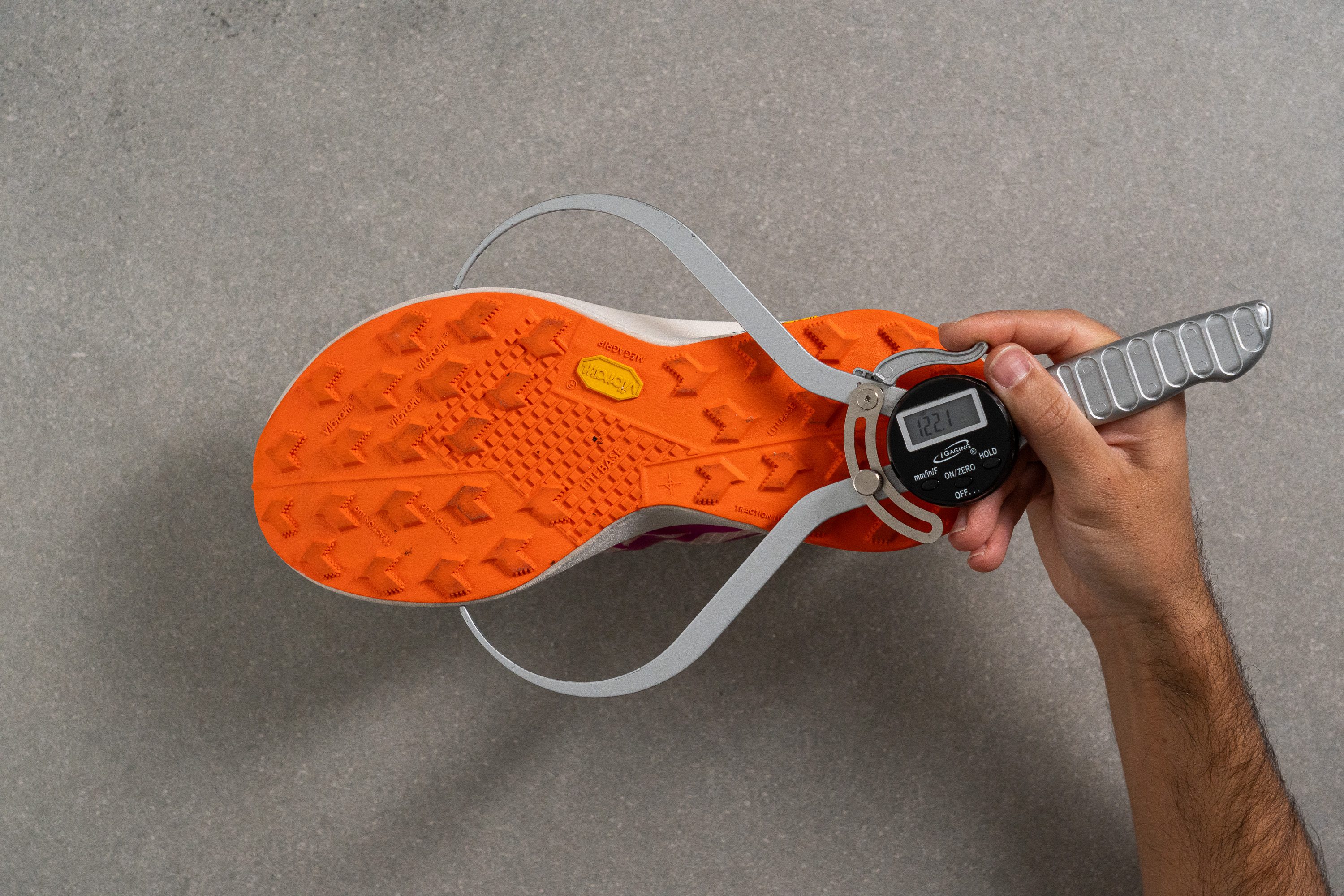
| Ultrafly | 122.1 mm |
| Average | 112.8 mm |
Midsole width - heel
Similarly, in the heel, the shoe outshines nearly all other trail shoes with a width of 93.4 mm.
This ensures that the shoe accommodates all footstrikes with proper stability, regardless of whether you land towards the front or back of your feet.
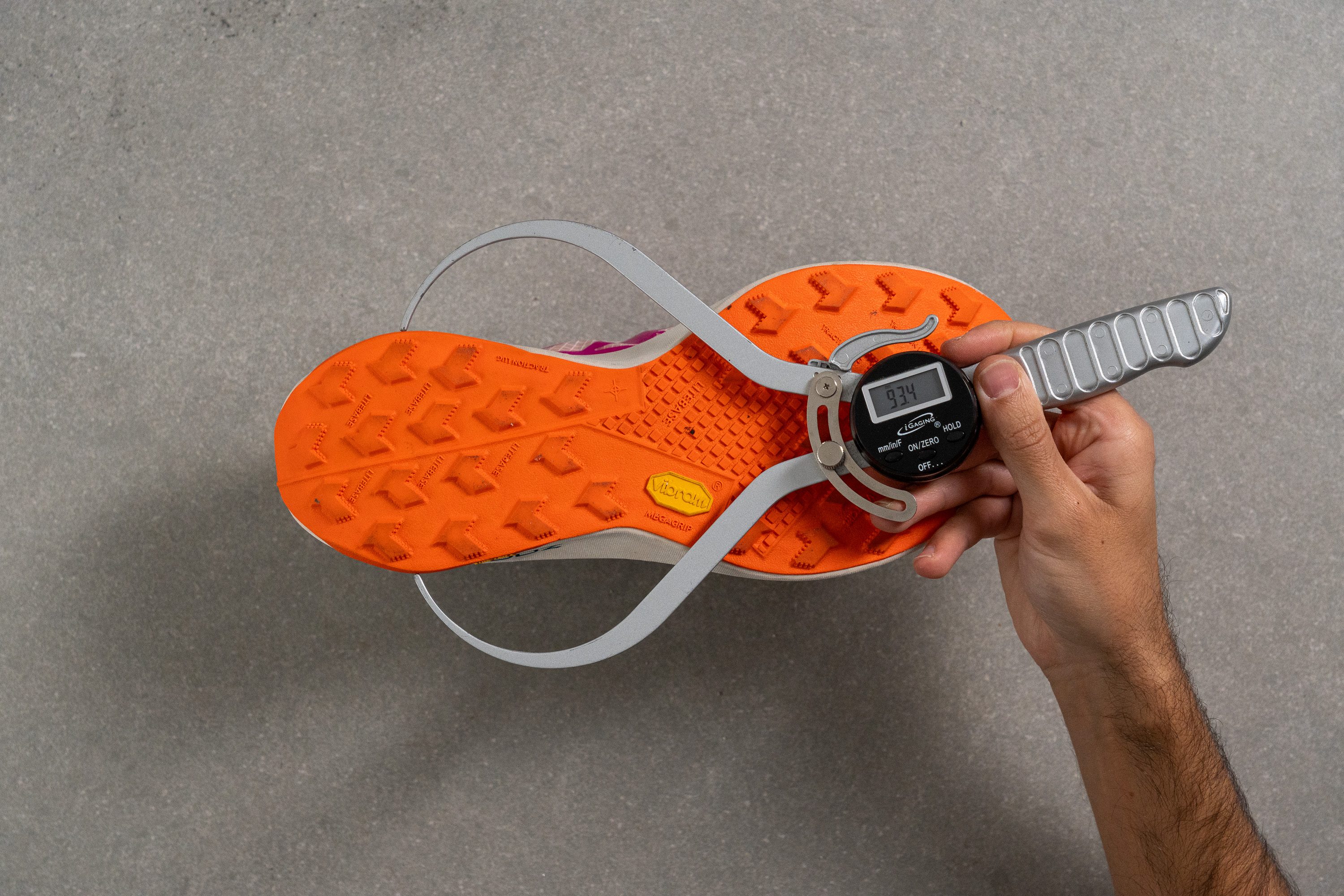
| Ultrafly | 93.4 mm |
| Average | 89.9 mm |
Durability
Toebox durability
Durability is crucial for trail shoes, yet the Vaporweave upper of the Ultrafly disappoints in this regard. Without any significant protective strips, it offers little resistance, scoring a mere 1/5 in our Dremel test.
However, it's important to note that this shoe isn't designed for harsh, rocky technical terrains, but rather for ultra running on easier trails. In such conditions, the lack of durability isn't as critical, but it's a notable compromise for a trail shoe anyway.
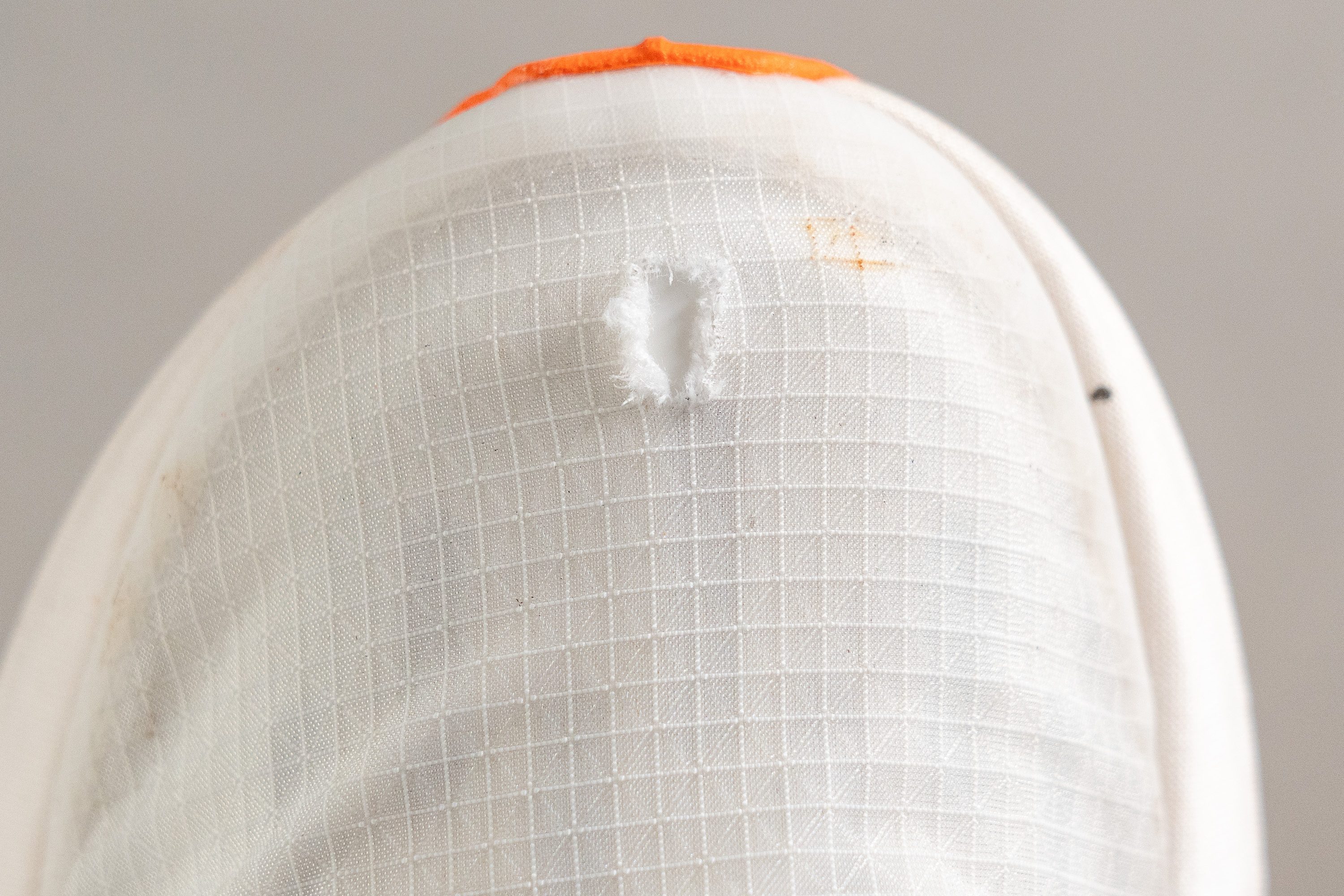
| Ultrafly | 1 |
| Average | 3.1 |
Heel padding durability
Nike has done a fantastic job enhancing the heel padding durability in their racing shoes, and the Ultrafly, much like its road sibling, the Vaporfly 3, reaps the benefits.
Our Dremel test yielded an impressive 5/5 result, setting a benchmark that other brands should definitely consider.
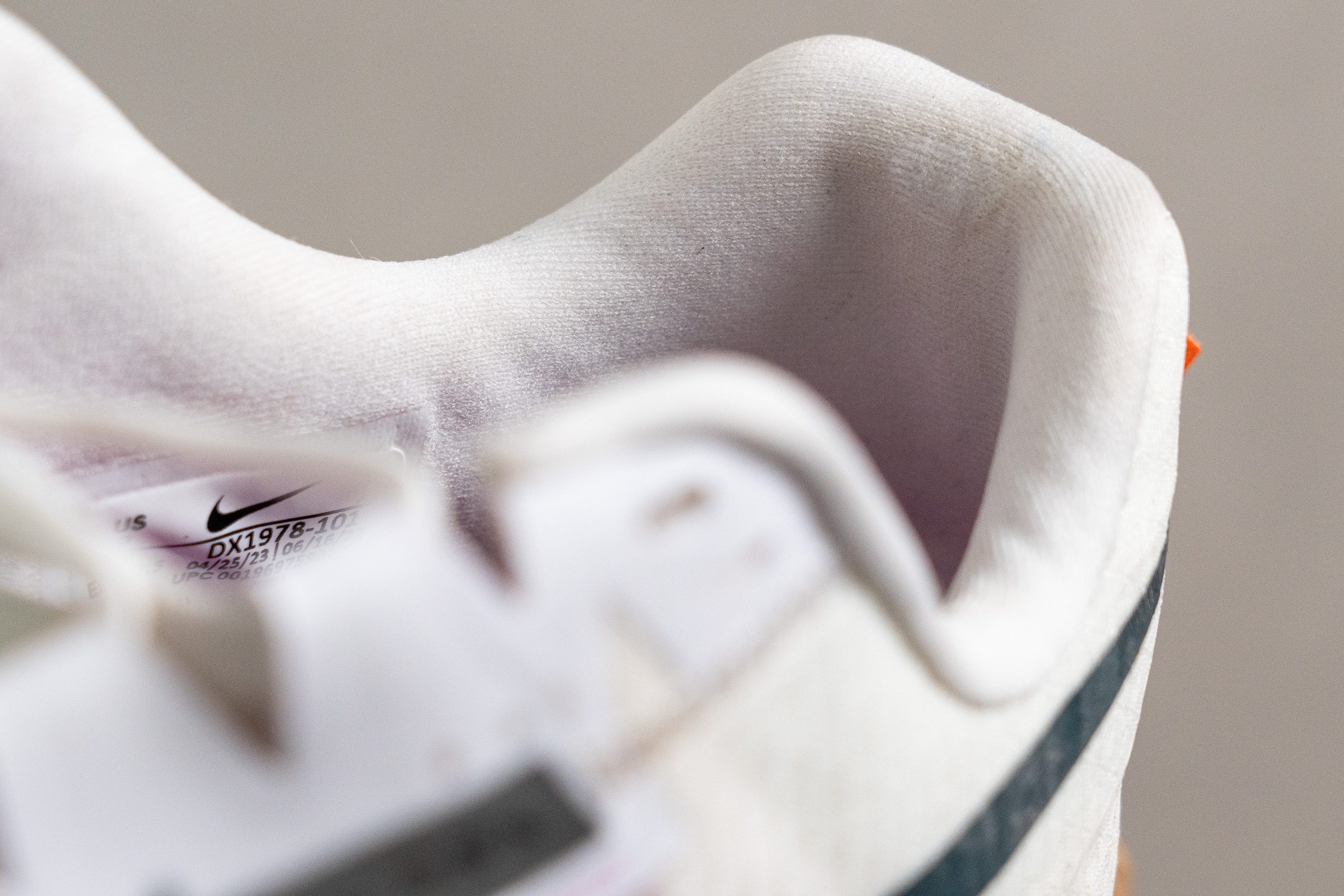
| Ultrafly | 5 |
| Average | 3 |
Outsole hardness
Runners often criticized Nike outsoles for their poor grip and quality. However, those days are behind us with the Ultrafly because the Oregon-based brand has FINALLY teamed up with Vibram.
The Megagrip Litebase outsole in a Nike shoe for the first time is a game-changing collaboration.
Our measurements confirmed what we anticipated, with the outsole coming in just below average for trail shoes, at 80.5 HC.

| Ultrafly | 80.5 HC |
| Average | 85.8 HC |
Outsole durability
Vibram outsoles are known for their solid performance in durability, and the results of our third Dremel test did not disappoint.
We observed a mere 0.7 mm dent after this rigorous test, a result that is positively encouraging.

| Ultrafly | 0.7 mm |
| Average | 0.9 mm |
Outsole thickness
Accustomed as we are to ultra-rugged trail running shoes, this one stands apart.
With an outsole measuring just 1.0 mm, it's quite thin, aiming for weight reduction. However, you can expect sufficient durability, thanks to the proven toughness of the Vibram rubber.
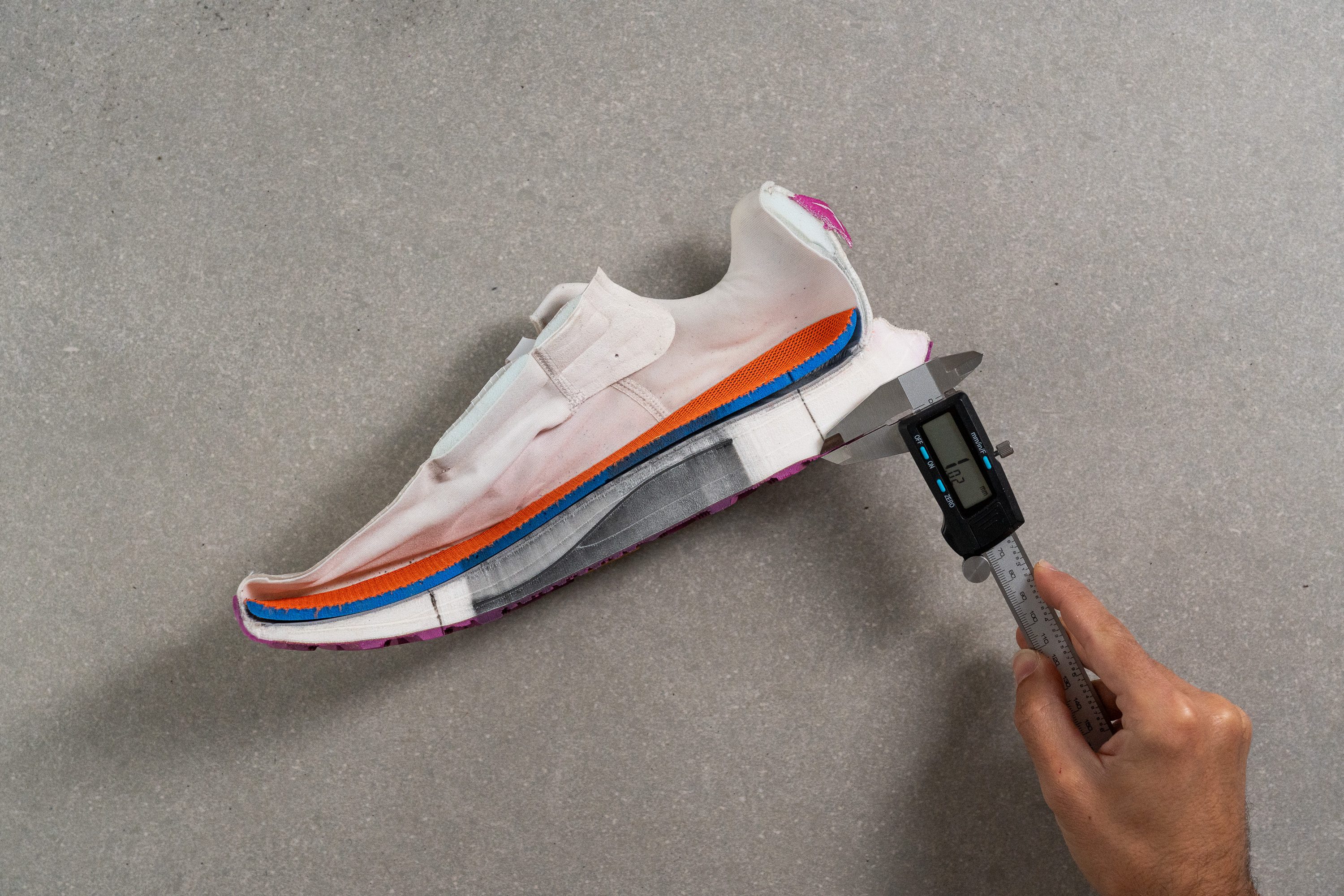
| Ultrafly | 1.0 mm |
| Average | 2.2 mm |
Misc
Insole thickness
The insole is very cushioned, contributing to the overall plush and comfortable feel during runs. While the Ultrafly it's a bit heavy for a racing shoe, it's important to note that the extra weight is entirely devoted to enhancing comfort.
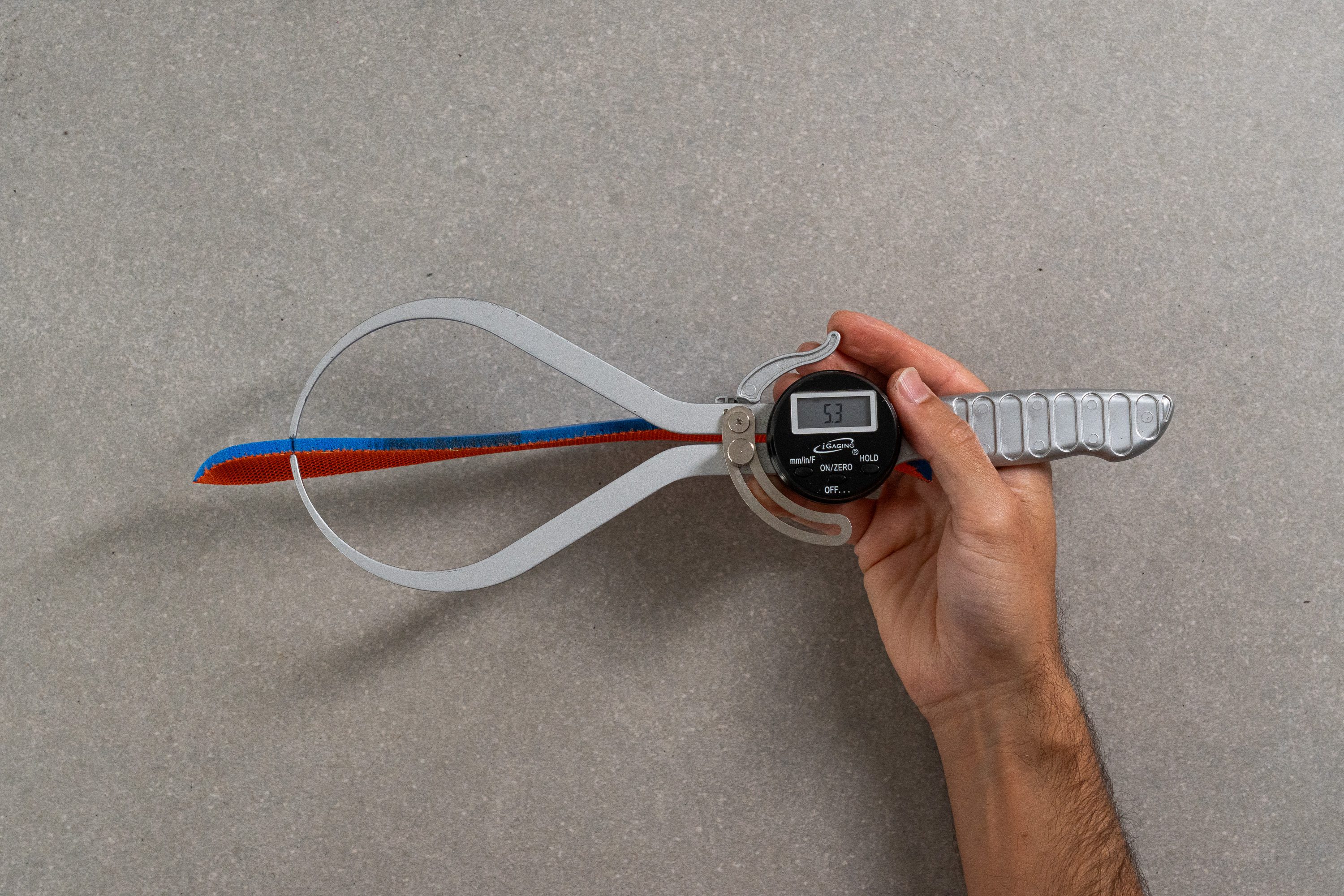
| Ultrafly | 5.3 mm |
| Average | 4.7 mm |
Removable insole
The insole is removable, and thanks to the generous dimensions of both the midsole and upper, there’s ample room to accommodate insoles from other shoes or custom orthotics with ease.

| Ultrafly | Yes |
Midsole softness in cold
We tested the Ultrafly in the lab to simulate those cold, bone-chilling winter runs and then remeasured its softness. Our durometer showed a result of 11.8 HA.
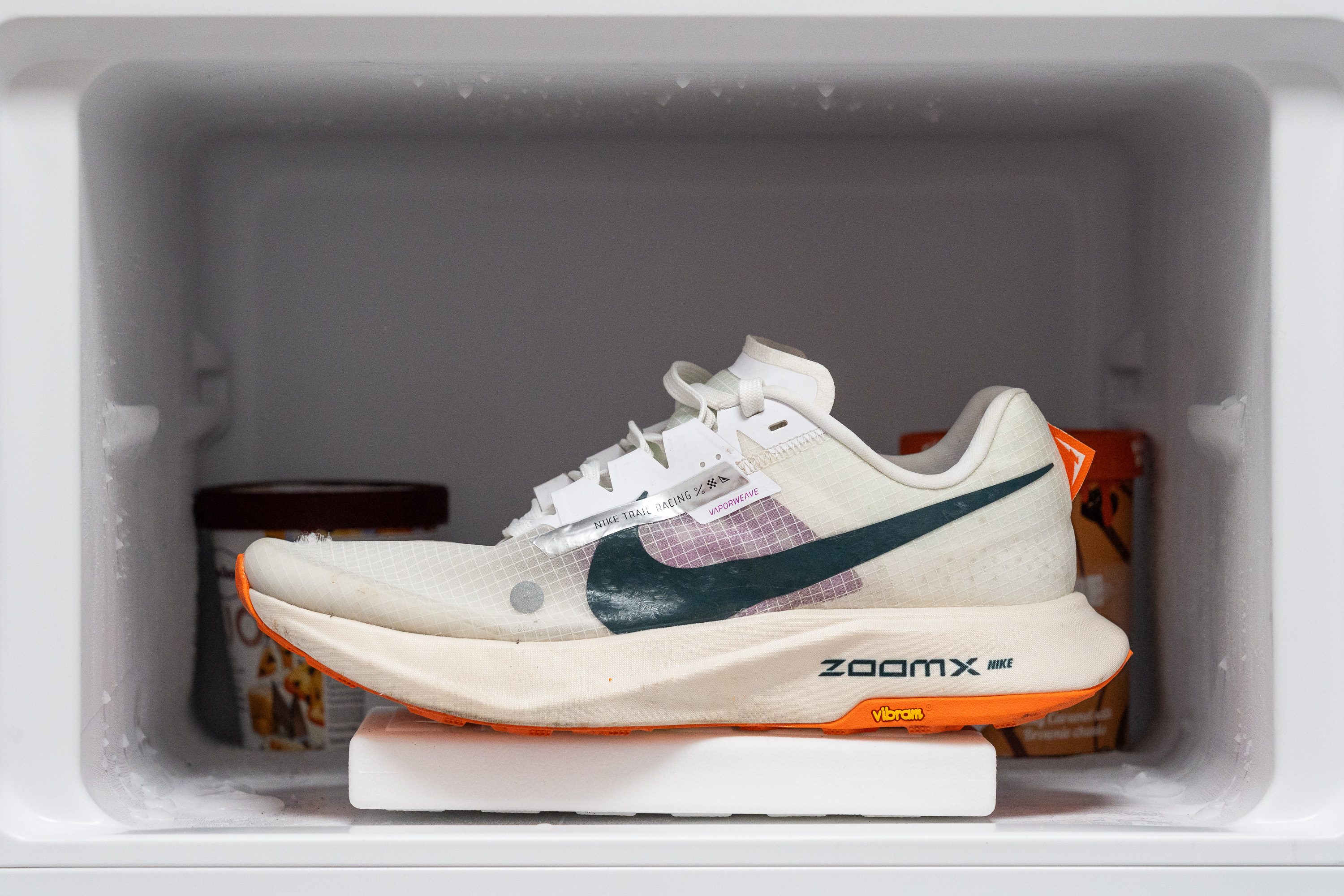
| Ultrafly | 11.8 HA |
| Average | 27.4 HA |
Midsole softness in cold (%)
Given that ZoomX is a Pebax-based midsole, it was crystal clear that it would excel (+20.5%) even after being exposed to cold temperatures. We go deep into this in our advanced guide on the topic.
| Ultrafly | 21% |
| Average | 26% |
Reflective elements
Nike has added some reflective elements to the Ultrafly, but we believe they could enhance this feature. Perhaps incorporating a reflective swoosh?
| Ultrafly | Yes |
Tongue padding
Designed mainly for ultra-marathons like the Western States Endurance Run, it was almost essential for Nike to include a plush, comfort-focused tongue in this shoe. It helps prevent lace bite and similar issues.
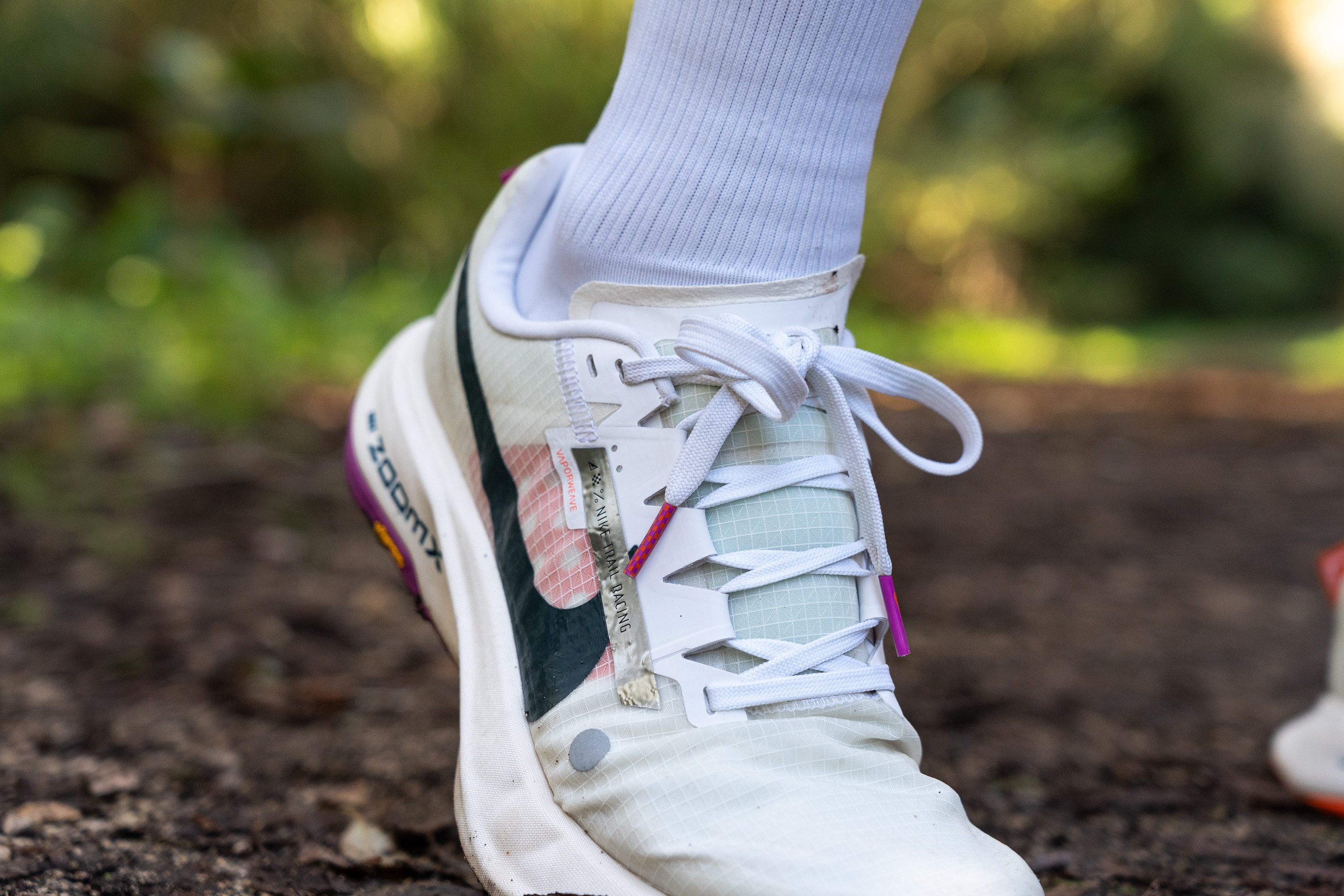
While this feature impacts the shoe's weight, we believe Nike could have opted for a 3-to-4-mm tongue instead of the 6.1 mm one. However, unlike in road running, most trail runners will likely appreciate the extra padding of the tongue, even if it means a few additional grams.
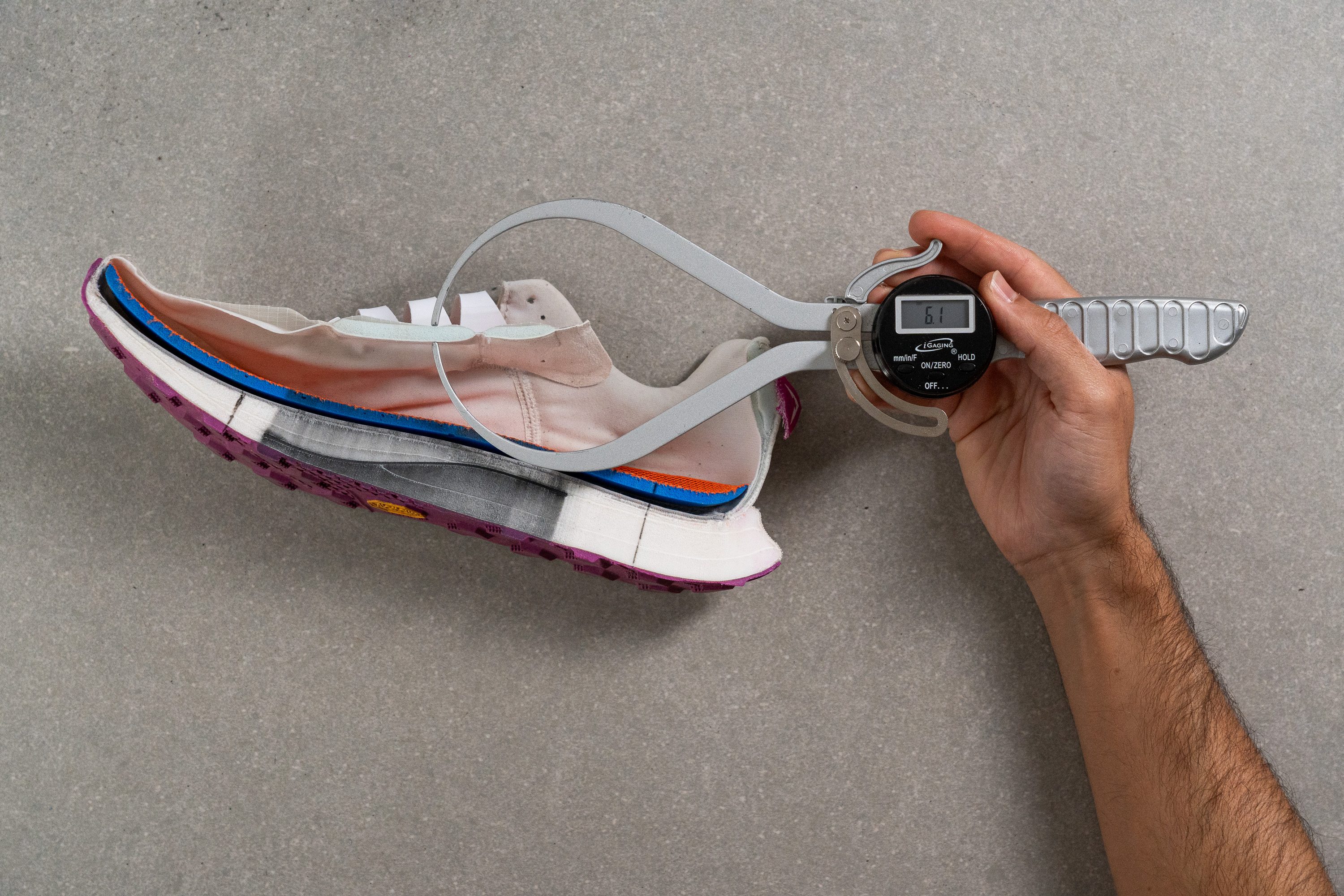
| Ultrafly | 6.1 mm |
| Average | 6.4 mm |
Heel tab
The Ultrafly doesn't have a heel tab, but Nike has added a cool touch by incorporating a sleek plastic piece featuring their trail running logo.
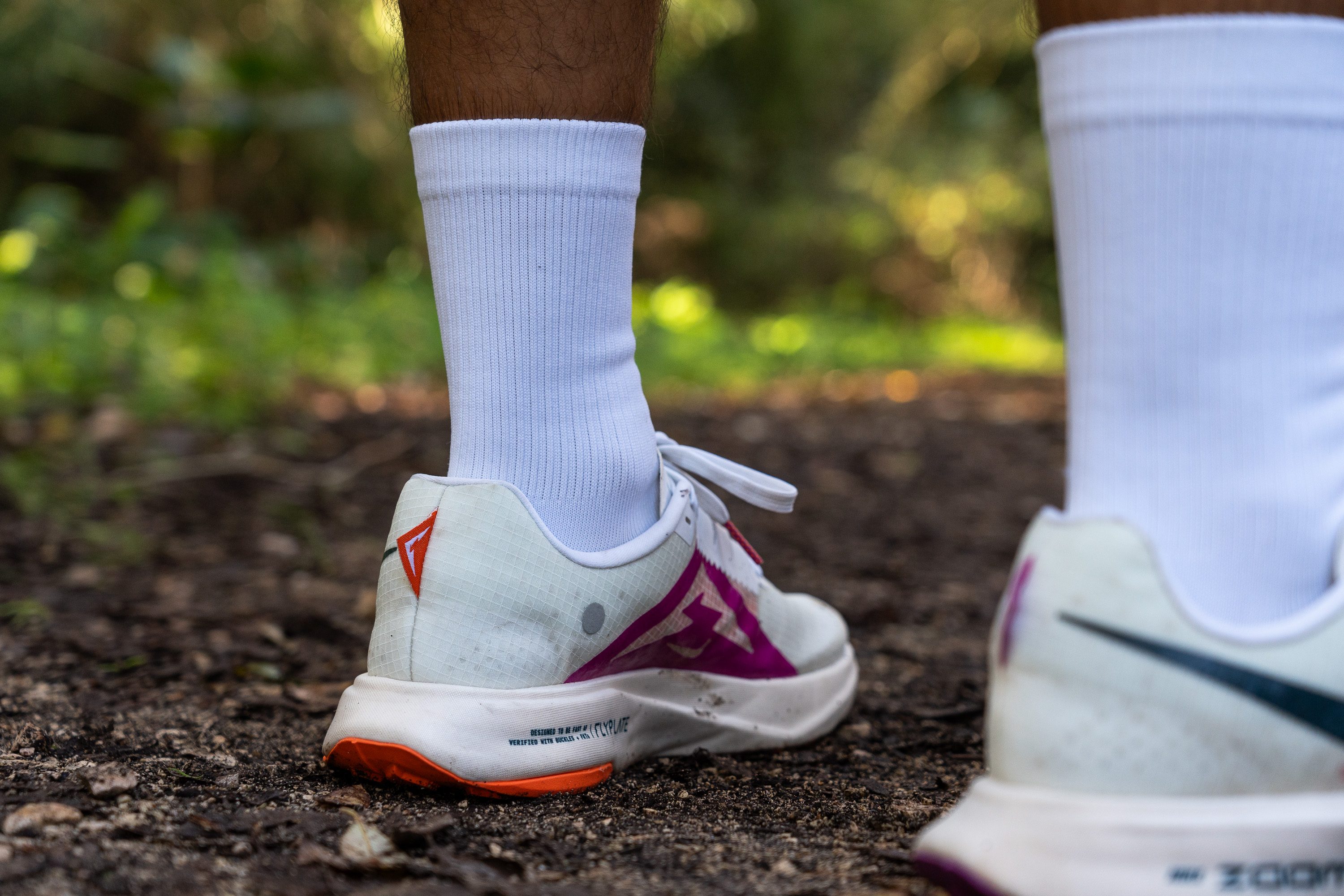
| Ultrafly | None |

